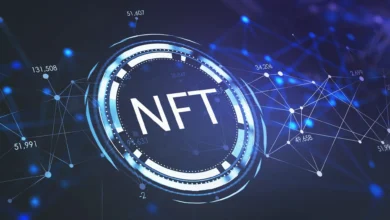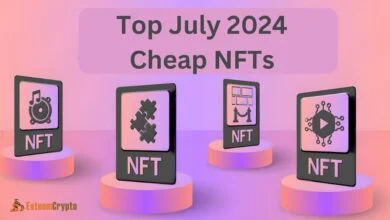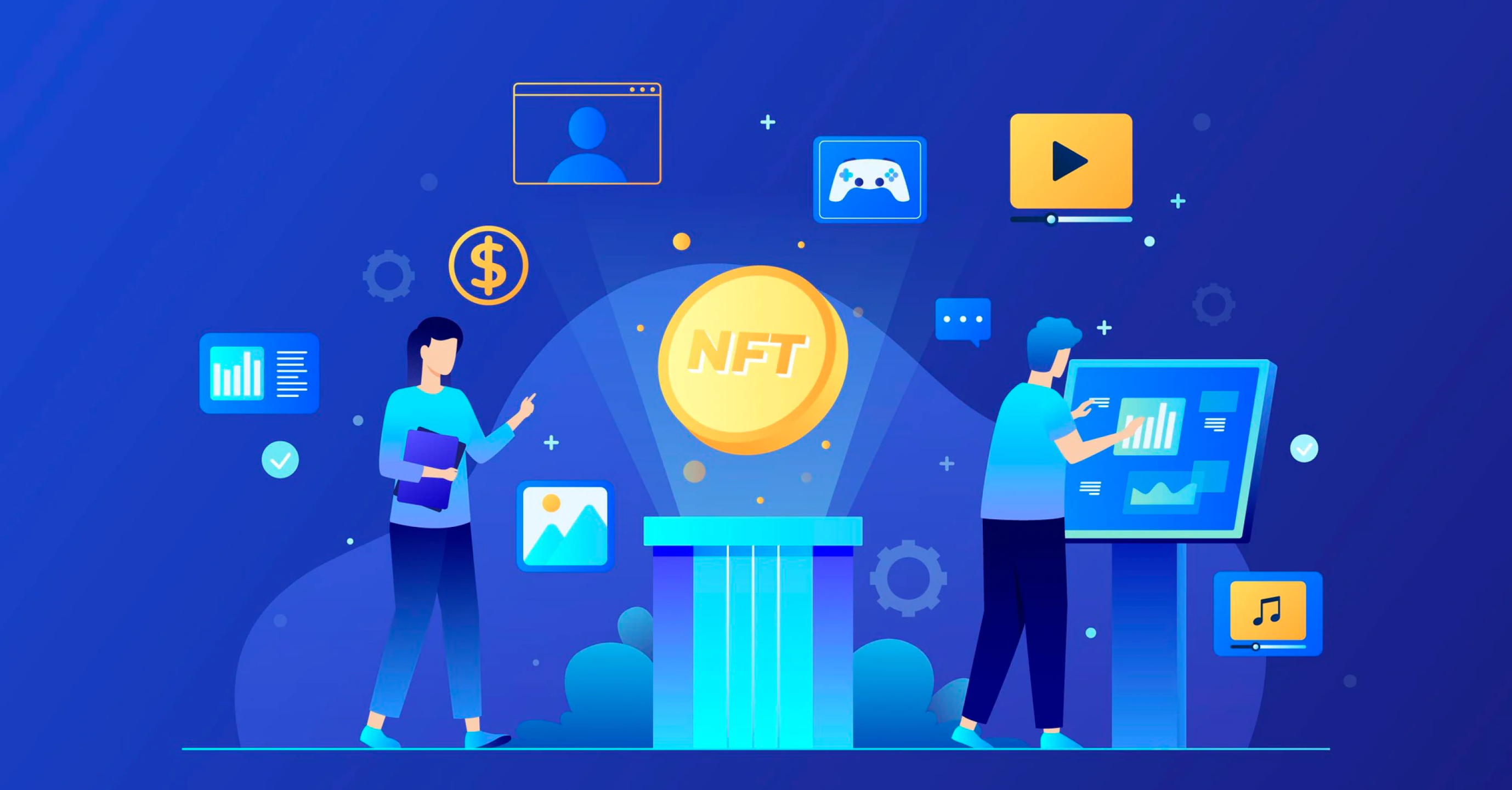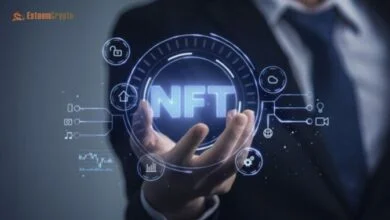What are NFTs and why are some worth millions

In March 2021, the digital art world witnessed a groundbreaking moment when artist Beeple’s NFT artwork “Everydays: The First 5000 Days” sold for a staggering $69.3 million at Christie’s auction house. This sale catapulted non-fungible tokens into mainstream consciousness and left many wondering: what exactly are NFTs, and why are people willing to pay millions for what appears to be digital images anyone can screenshot?
The concept of digital ownership has fundamentally transformed how we perceive value in the digital age. NFTs represent a revolutionary shift from traditional asset ownership to blockchain-based digital certificates that prove authenticity and ownership of unique digital items. Unlike traditional digital files that can be copied infinitely, NFTs create scarcity in the digital realm through blockchain technology, establishing provable ownership of digital assets ranging from artwork and music to virtual real estate and gaming items.
NFTs requires grasping several interconnected concepts: blockchain technology, smart contracts, digital scarcity, and the evolving nature of digital collectibles. These crypto assets have created entirely new markets and investment opportunities, with some NFT collections generating hundreds of millions in trading volume. The phenomenon extends beyond simple speculation, touching on fundamental questions about art, ownership, community, and the future of digital commerce.
This comprehensive guide will demystify the NFT marketplace, explore the technology behind these digital assets, examine why certain NFTs command astronomical prices, and analyze the factors that determine an NFT’s value in today’s rapidly evolving digital economy.
What Are NFTs? A Deep Dive into Non-Fungible Tokens
Non-Fungibility
Non-fungible tokens are unique digital certificates stored on a blockchain that represent ownership of specific digital or physical assets. The term “non-fungible” is crucial to NFTs – it means each token is unique and cannot be exchanged on a one-to-one basis with another token, unlike cryptocurrencies such as Bitcoin or Ethereum, which are fungible.
To illustrate this concept, consider traditional currency: one dollar bill has the same value as any other dollar bill, making them interchangeable or “fungible.” In contrast, each NFT is like a unique piece of art – no two are identical, and each has distinct characteristics that determine its individual value. This uniqueness is mathematically guaranteed through cryptographic hashing and recorded immutably on the blockchain.
The Technical Foundation
NFTs are typically built on Ethereum blockchain using standards like ERC-721 or ERC-1155, though other blockchains like Solana, Polygon, and Binance Smart Chain also support NFT creation. Each NFT contains metadata that describes the asset it represents, including details about the creator, creation date, and properties that make it unique.
The smart contract technology underlying NFTs automatically executes predefined conditions without intermediaries. This means ownership transfers, royalty payments to creators, and other transactions occur automatically when specific conditions are met. Smart contracts ensure that creators can receive ongoing royalties every time their NFT is resold, providing a sustainable income model for digital artists.
Types of NFT Assets
Digital collectibles encompass a vast range of asset types. NFT art represents the most prominent category, including everything from pixel art and generative art to complex digital sculptures and animations. Gaming NFTs allow players to own unique in-game items, characters, or land parcels that can be traded across different platforms.
Utility NFTs provide holders with specific benefits or access rights, such as membership to exclusive communities, early access to events, or governance rights in decentralized autonomous organizations (DAOs). Music NFTs enable artists to sell exclusive tracks, concert tickets, or fan experiences directly to their audience, bypassing traditional distribution channels.
The Technology Behind NFTs: Blockchain and Smart Contracts
Blockchain Infrastructure
The blockchain technology serving as the foundation for NFTs provides several critical features that make digital ownership possible. Immutability ensures that once an NFT is recorded on the blockchain, its ownership history cannot be altered or deleted. Transparency allows anyone to verify the authenticity and ownership chain of any NFT using blockchain explorers.
Decentralization means no single entity controls the NFT ecosystem, reducing the risk of censorship or arbitrary changes to ownership rules. This distributed network of computers worldwide maintains the blockchain, ensuring NFTs remain accessible and verifiable regardless of what happens to any individual platform or marketplace.
Smart Contract Functionality
Smart contracts governing NFTs contain sophisticated programming logic that defines how tokens behave. They specify ownership rules, transfer mechanisms, royalty structures, and any special properties or utilities associated with the token. Advanced smart contracts can include features like time-locked releases, conditional ownership transfers, or dynamic metadata that changes based on external conditions.
The programmable nature of NFTs enables innovative use cases beyond simple ownership certificates. Some NFTs evolve over time, changing appearance based on market conditions or holder behavior. Others provide access to physical items, serve as membership tokens for exclusive communities, or grant voting rights in decentralized governance systems.
Interoperability and Standards
NFT standards like ERC-721 and ERC-1155 ensure compatibility across different platforms and applications. This interoperability means an NFT purchased on one marketplace can be displayed in various wallets, used in compatible games, or sold on different platforms without technical barriers.
Cross-chain NFT bridges are emerging to connect different blockchain ecosystems, allowing NFTs to move between networks like Ethereum, Solana, and Polygon. This increased interoperability enhances liquidity and utility for NFT holders while expanding the potential market for creators.
Why Some NFTs Are Worth Millions: Market Dynamics and Value Drivers
Scarcity and Exclusivity
The astronomical valuations of certain NFTs stem from multiple interconnected factors that create and sustain demand. Artificial scarcity plays a fundamental role – when only a limited number of tokens exist for a particular collection or artwork, basic supply and demand economics drive up prices. Rare NFTs with unique traits or historical significance command premium prices similar to rare collectibles in traditional markets.
Exclusivity extends beyond mere numbers to encompass social status and community access. Owning certain NFT collections like CryptoPunks or Bored Ape Yacht Club provides membership to exclusive groups, access to special events, and social recognition within crypto communities. This social capital often justifies high purchase prices for buyers seeking status and networking opportunities.
Celebrity and Brand Association
Celebrity endorsements and brand partnerships significantly impact NFT valuations. When prominent figures like musicians, athletes, or influencers launch or promote NFT collections, their existing fanbase often drives initial sales and ongoing demand. Limited collaborations between established brands and NFT artists create unique value propositions that appeal to both crypto enthusiasts and traditional collectors.
The involvement of respected institutions like major auction houses (Christie’s, Sotheby’s) or established galleries lending credibility to NFT art sales has legitimized the market for traditional art collectors and investors. This institutional validation helps justify higher valuations and attracts more serious collectors to the space.
Utility and Future Potential
Beyond speculative trading, many high-value NFTs derive worth from their utility or future potential. Gaming NFTs that provide competitive advantages, exclusive content, or earning opportunities in popular blockchain games can justify substantial investments. Metaverse land NFTs gain value from their potential for development, advertising, or hosting virtual events as digital worlds expand.
Utility tokens offering real-world benefits, exclusive access, or governance rights often maintain stronger value propositions than purely aesthetic digital collectibles. Projects that successfully combine artistic appeal with practical utility tend to sustain higher valuations over time.
Market Speculation and FOMO
The rapid price appreciation of certain NFTs creates powerful psychological drivers that fuel further investment. Fear of missing out (FOMO) leads buyers to make hasty purchasing decisions, often paying premium prices for NFTs they believe will continue appreciating. Social media amplifies successful sales, creating viral marketing effects that drive additional interest and investment.
Speculation on future metaverse development, gaming integration, or mainstream adoption of digital assets influences current valuations. Investors betting on the long-term growth of the NFT market often pay current premiums expecting significant future returns as the technology and market mature.
Major NFT Success Stories and Record-Breaking Sales
Beeple’s Digital Art Revolution
Mike Winkelmann, known as Beeple, fundamentally changed perceptions of digital art value with his record-breaking Christie’s sale. His “Everydays” series represented 13 years of daily digital creation, with the final NFT compilation selling for $69.3 million. This sale demonstrated that digital art could command prices comparable to works by renowned traditional artists, legitimizing NFTs as serious collectibles.
Beeple’s success opened doors for countless digital artists who previously struggled to monetize their work effectively. The sale proved that digital creation could be valued not just for its aesthetic qualities but also for the story, dedication, and innovation it represents.
CryptoPunks: The Original NFT Collection
Created by Larva Labs in 2017, CryptoPunks represent one of the earliest and most influential NFT collections. These 10,000 unique 24×24 pixel art characters established many conventions still used in modern NFT projects, including algorithmic generation, trait rarity systems, and limited supply models.
Individual CryptoPunks have sold for millions of dollars, with the most expensive reaching over $11 million. The collection’s historical significance as an early blockchain experiment, combined with their distinctive pixelated aesthetic and strong community, has created sustained demand among collectors and investors.
Bored Ape Yacht Club: Community-Driven Value
Yuga Labs’ Bored Ape Yacht Club (BAYC) demonstrated how NFT projects could build value through community engagement and brand development. Beyond the initial 10,000 ape avatars, the project expanded to include additional collections, merchandise, events, and even plans for a metaverse game.
BAYC NFTs have generated hundreds of millions in trading volume, with individual apes selling for hundreds of thousands of dollars. Celebrity ownership, including musicians, athletes, and actors using their apes as social media avatars, has increased visibility and cultural relevance significantly.
Music and Entertainment NFTs
Musicians like Kings of Leon, Grimes, and 3LAU have successfully launched music NFTs, selling exclusive tracks, concert experiences, and fan perks. These projects demonstrated how NFTs could revolutionize music distribution and fan engagement, providing artists with direct monetization opportunities and fans with unique experiences.
The success of entertainment NFTs extends beyond music to include sports highlights (NBA Top Shot), virtual concert tickets, and exclusive content from content creators. These use cases show how NFTs can enhance fan relationships and create new revenue streams for entertainers.
The NFT Marketplace Ecosystem
Leading Trading Platforms
OpenSea dominates the NFT marketplace landscape, facilitating billions of dollars in trading volume across various categories. The platform supports multiple blockchains and offers user-friendly interfaces for both creators and collectors. Its success demonstrates the importance of accessibility and comprehensive features in NFT trading platforms.
Rarible, Foundation, and SuperRare represent more curated approaches to NFT marketplaces, focusing on high-quality art and established creators. These platforms often feature more selective listing processes and stronger community aspects, appealing to serious collectors and artists seeking prestige associations.
Specialized marketplaces like NBA Top Shot (sports moments), Axie Marketplace (gaming assets), and Async Art (programmable art) cater to specific niches within the broader NFT ecosystem. These focused platforms often provide specialized features and community support tailored to their particular use cases.
Creator Tools and Minting Platforms
The democratization of NFT creation through user-friendly minting platforms has lowered barriers for artists and creators. Platforms like Mintable, Zora, and Async Art provide tools for creating, customizing, and launching NFT collections without requiring extensive technical knowledge.
Advanced creators use platforms like Art Blocks for generative art, where algorithms create unique pieces at the moment of purchase. These platforms showcase how technology can enhance artistic expression while maintaining the scarcity and uniqueness that drive NFT value.
Secondary Market Dynamics
The secondary NFT market operates similarly to traditional art markets, with factors like provenance, condition, and market sentiment influencing prices. However, blockchain transparency provides unprecedented visibility into trading history, ownership patterns, and market manipulation attempts.
Royalty systems built into NFT smart contracts ensure original creators receive compensation from secondary sales, typically ranging from 2.5% to 10% of each transaction. This ongoing income stream incentivizes creators to build long-term value and maintain engagement with their communities.
NFT Valuation Factors
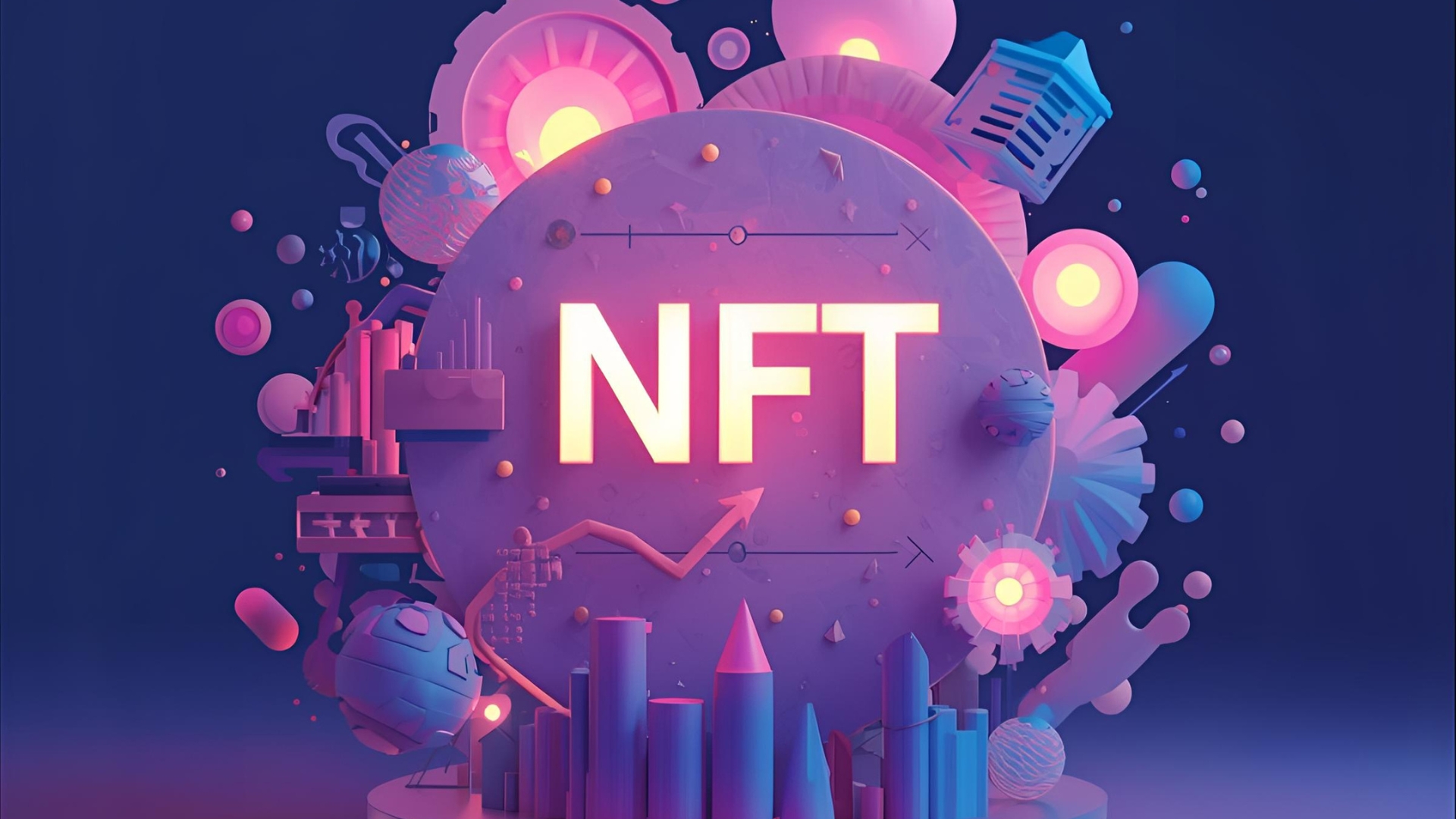
Rarity and Trait Analysis
NFT rarity systems assign value based on the statistical frequency of specific traits within a collection. Projects typically include various attributes (background, clothing, accessories) with different rarity levels, creating natural hierarchies of value within collections. Rarity ranking tools help collectors identify potentially undervalued pieces and make informed purchasing decisions.
The mathematical approach to NFT valuation through rarity analysis provides some objectivity to an otherwise subjective market. However, community preferences, aesthetic appeal, and cultural significance can override pure statistical rarity in determining actual market prices.
Creator Reputation and Provenance
The reputation and track record of NFT creators significantly influence valuation. Established artists with traditional art world recognition often command higher prices for their digital works. Similarly, successful previous NFT launches by creators tend to increase demand for their subsequent releases.
Provenance tracking through blockchain records provides unprecedented transparency in ownership history. NFTs with interesting ownership chains, including celebrity owners or historical significance, often carry premium valuations beyond their intrinsic artistic or utility value.
Community Engagement and Social Media Presence
Active communities around NFT projects contribute significantly to sustained value. Projects with engaged Discord servers, Twitter communities, and regular creator communication tend to maintain stronger floor prices and trading volume. Community-driven initiatives, fan art, and derivative projects often indicate healthy, sustainable demand.
Social media influence plays a crucial role in NFT valuation, with Twitter followers, Instagram engagement, and viral moments directly correlating with price movements. Projects that successfully build and maintain social media presence often outperform purely artistic or utility-focused competitors.
Market Timing and Economic Factors
Cryptocurrency market conditions heavily influence NFT valuations, as most transactions occur using crypto payments. Bull markets in Bitcoin and Ethereum typically correspond with increased NFT trading activity and higher average prices. Conversely, crypto market downturns often lead to decreased NFT liquidity and lower valuations.
Broader economic factors, including inflation concerns, traditional market volatility, and regulatory developments, impact digital asset investments. NFTs, as alternative investments, often experience increased interest during periods of traditional market uncertainty.
Risks and Criticisms of the NFT Market
Market Volatility and Speculation
The NFT market exhibits extreme volatility, with prices capable of dramatic swings based on hype, celebrity endorsements, or market sentiment shifts. Many NFT investments are purely speculative, lacking fundamental value drivers beyond market psychology and social media trends.
Bubble concerns persist as rapid price appreciation in certain segments appears disconnected from underlying utility or artistic merit. Critics argue that current NFT valuations represent irrational exuberance similar to historical financial bubbles, warning of potential significant corrections.
Environmental and Technical Concerns
Blockchain energy consumption, particularly on proof-of-work networks like Ethereum, has drawn environmental criticism. Each NFT transaction requires computational power that contributes to carbon emissions, leading to concerns about the environmental impact of digital art and collectibles.
Technical limitations including gas fees, network congestion, and scalability issues create barriers to mainstream adoption. High transaction costs on popular networks can make small NFT transactions economically unfeasible, limiting market accessibility.
Legal and Regulatory Uncertainty
The legal framework surrounding NFT ownership remains unclear in many jurisdictions. Questions about intellectual property rights, creator royalties, and consumer protection regulations create uncertainty for both creators and collectors. Regulatory developments could significantly impact NFT market operations and valuations.
Copyright infringement issues arise when NFTs are created using copyrighted material without permission. The decentralized nature of blockchain networks makes enforcement challenging, leading to ongoing disputes about legitimate ownership and creator rights.
Market Manipulation and Fraud
Wash trading, where individuals buy and sell NFTs to themselves to create artificial trading volume and price appreciation, represents a significant market manipulation concern. The pseudonymous nature of blockchain transactions makes detecting such activities challenging for marketplaces and regulators.
Rug pulls and fraudulent projects have damaged market confidence, with creators disappearing after collecting initial sales without delivering promised utilities or artwork. Due diligence becomes crucial for collectors navigating an unregulated market with limited consumer protections.
The Future of NFTs Trends and Predictions

Mainstream Adoption and Integration
The integration of NFTs into mainstream applications and services represents a significant growth opportunity. Major brands are experimenting with NFT loyalty programs, exclusive content delivery, and customer engagement strategies. This mainstream adoption could provide more stable demand and practical use cases beyond speculative trading.
Social media platforms are beginning to integrate NFT display features, allowing users to showcase their collections as profile pictures or in dedicated galleries. This integration increases NFT visibility and social utility, potentially driving broader adoption among non-crypto-native users.
Technological Improvements
Layer 2 scaling solutions and alternative blockchain networks are addressing current limitations in transaction costs and speed. These improvements make NFT trading more accessible to casual users and enable new use cases requiring frequent transactions.
Interoperability protocols are developing to enable NFT movement between different blockchain networks and applications. This increased connectivity could unlock new utility and liquidity for existing collections while enabling innovative cross-platform experiences.
Utility Expansion
The evolution from purely collectible NFTs to utility-driven tokens represents a maturing market. Future NFT projects will likely focus more on providing tangible benefits, exclusive access, or real-world utilities rather than relying solely on scarcity and speculation.
Gaming integration and metaverse development could provide substantial utility for NFT collections, with virtual worlds offering practical applications for digital ownership. As these environments mature, NFTs representing virtual real estate, avatars, and in-game items may develop more stable, utility-based valuations.
Also Read: Top 10 Secrets to Purchase Digital Art NFTs Successfully
Conclusion
The NFT phenomenon represents a fundamental shift in how we conceptualize ownership, art, and value in the digital age. While current market conditions exhibit speculative characteristics reminiscent of historical bubbles, the underlying technology and concepts have legitimate applications that extend far beyond simple digital collectibles.
Why NFTs are worth millions requires recognizing the complex interplay of technology, psychology, community, and economics that drives this emerging market. Successful NFT projects combine artistic merit, technological innovation, community engagement, and utility creation to justify their valuations and maintain long-term relevance.
The future of NFTs will likely see increased integration with mainstream applications, improved technical infrastructure, and evolution toward utility-focused use cases. While speculative trading may continue, the most successful projects will be those that provide genuine value to users through access, experiences, or practical applications.
As the digital economy continues expanding, NFTs represent one approach to solving fundamental questions about digital ownership, creator compensation, and community building in virtual environments. Whether current valuations prove sustainable depends largely on the ability of projects to deliver lasting value beyond initial hype and speculation.
For creators, collectors, and investors considering NFT participation, both the opportunities and risks remains crucial. The technology offers genuine innovation in digital ownership and creator monetization, but market participation requires careful consideration of volatility, regulatory uncertainty, and the speculative nature of current valuations.
The NFT market continues evolving rapidly, with new use cases, technologies, and business models emerging regularly. Success in this space requires staying informed about technological developments. Market trends and the fundamental factors that drive long-term value in digital assets. As the space matures, those who focus on utility, community, and genuine innovation are most likely to build sustainable value in the digital collectibles ecosystem.

